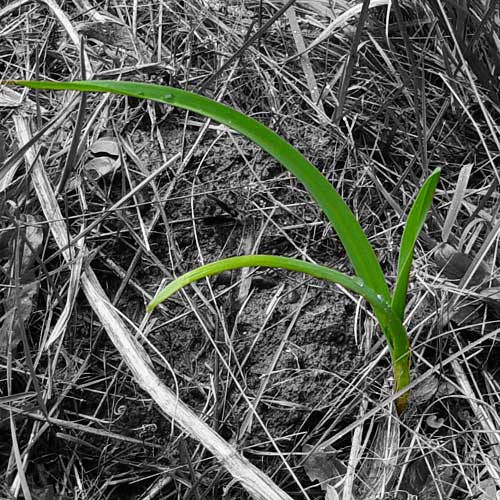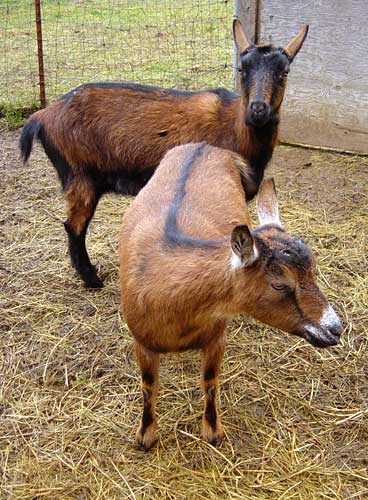So, chickens. Where to begin? When last I posted on chickens (about 6ish weeks ago), we had just caught our first glimpses of Shygirl’s new chicks, and were waiting to see if any more would hatch.
The day after I wrote that post, Shygirl left her nest (and the remaining three eggs), and made a new nest for herself and her four little ones. The other eggs had gotten cold, so we thought they probably wouldn’t hatch. I removed them from the nest. As I was carrying them away, I realized that one had a hole in it. As I looked closer, I realized that there was movement inside. Then I heard a soft little peep.
Our goat mentor friend was over at the time, and we rushed the eggs into the house. She held the active one in her hands above the wood stove to warm it up, while I raced around making a nest out of towels in a cardboard box for the other two eggs, filling hot water bottles to place in the box, and moving the whole contraption onto a chair next to the wood stove.
See the hole in the side of the egg? The other two eggs are wrapped in the towels next to the hot water bottle on the left.

Soon we could hear more peeping coming from the egg, and could see a little beak starting to enlarge the recently pipped hole.
Once Peter returned to the house (from the goat pen, aka Goatlandia), he remembered an old aquarium he’d found in the shed, and rushed to clean it out and fill the bottom with straw for a makeshift incubator. We found an old clamp light and a 100 watt bulb to place over the top for heat, and moved the eggs into their new and improved nest.

The photos of the little bird hatching, that Peter put up a couple of posts ago? That was this egg, the first one to hatch in the house. That evening, we were able to successfully place the healthy chick back in the coop with Shygirl – she pecked at it once, then watched it suspiciously until it ran to her and dove under her chest. Then she rather contentedly settled in for the night – now with five babies.
The next day (Sunday), one of the final two eggs started chirping and pipping (cracking a hole in the egg). We waited and watched all day and late into the night. After they’ve made the initial hole, the chicks will then have a long rest period during which they’ll absorb what’s left of the yolk before they start pipping again. But this one seemed to be taking too long – it would start pipping, but not get very far, and then take another extended rest. And its peeps were sounding weaker.
I was starting to get worried, so somewhere in the wee hours of the morning, I decided to help. Unfortunately, more of the shell came away than I’d intended, and I saw that there was still a blood flow between the chick and what was left of the yolk. I also saw that the membrane that is located between the chick and the eggshell seemed dry and tight, and seemed to be holding the chick inside.
We ended up watching and waiting until about noon on Monday, when it was definitely getting weaker, and we were pretty sure it was not going to make it out on its own. In order to free the chick from the membrane and the rest of the eggshell, I held the light close so Peter could see, and he, very carefully, pulled off bits of eggshell with a tweezer, and with a dropper, dribbled bits of warm water on the membrane (which was stuck to the chick’s down) to moisten and loosen it.
This is the chick right after the “assisted hatch” – can’t even raise its head without a lot of effort:

And here, see how its feet are curled? That’s from being stuck in the shell for so long – it couldn’t stand or walk properly for the first day.
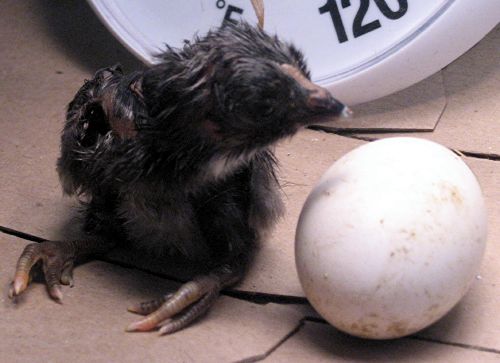
With the chick being so weak (and honestly, we weren’t even sure it would live), we couldn’t put it back out in the coop with Shygirl and the other babies. For chickens, one weak bird can make the entire flock vulnerable, so their instinct is to drive it away or dispatch it themselves. So we had ourselves a house chicken.
This is our new roommate at one day old, now able to stand and walk:

Fast forward to two weeks old: he/she is thriving, has learned to fly, and has graduated from the aquarium to a borrowed medium-sized dog kennel (complete with branches to roost on, and a teddy bear for company):
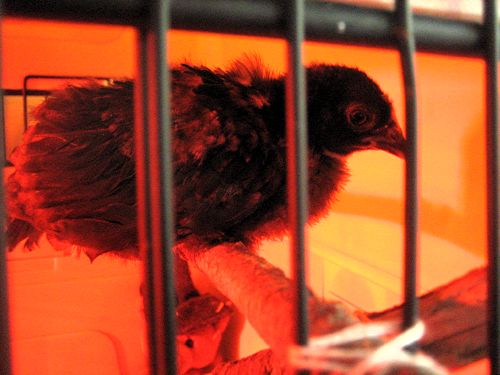
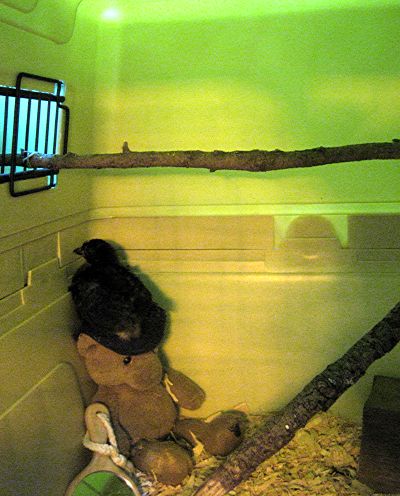
And fast forward again to the present: at six weeks of age, he is pretty definitely a he (though we won’t know 100% for sure until he either crows or lays an egg in a few months – but the big comb, wattles coming in, and general assertive nature are big clues), and he is still thriving. He’s larger than the other chicks that have been raised out in the coop with mama (even though he’s a full two days younger than the youngest outside chick), and he has up-sized yet again – this time to Daks’ large dog kennel. He loves to be held by us, and really loves to climb up our arms and sit on a shoulder or a head.
A couple of weeks ago, Peter built him a “chicken tractor” – basically a portable run, fenced with chicken wire on all sides and the top, but open on the bottom so he can forage for grass and bugs and other goodies.
Every day, around the same time that I let the other chickens out of the coop to free-range, I move the tractor to a new location and carry this little Cheepler (as we’ve been calling him) outside. And every evening, as the other chickens return to their roosts, I carry the Cheepler back inside, to his kennel in the living room.
Peter took these photos of me and the Cheepler hanging out in his “tractor” a few days ago. Look how big he is!
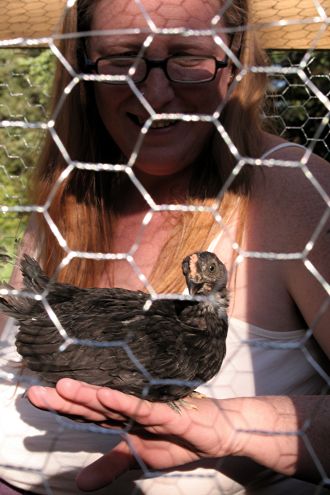

Eventually, we’ll try to move him out to the coop with the others, but it’ll take some time to get them all used to each other so he doesn’t get picked on too badly (though he’s already challenging Atom – our full-grown roo and patriarch of the flock – when Atom ranges too close to his tractor).
And speaking of the others: if you remember, we’d left the count at five chicks out in the coop with mama. Shygirl hatched four herself, two hatched in the house (with the one going back outside to her), and the final egg never ended up hatching.
When they hatched, mama and babies were in a broody box in the coop, so she could see the others but not get hassled by them. Once the babies were a couple of days old, we opened one side of the box so mama and babies were free to move about. Unfortunately, sometimes hens don’t like other hens’ babies, and that was the case with our Leo – she went after them.
So back into the broody box they went for a couple of days, until the weekend arrived and we could make them their own separate area of the coop (with their own private attached run) where the other chickens could see them, but not bother them.
Here’s mama and days-old babies in the broody box:

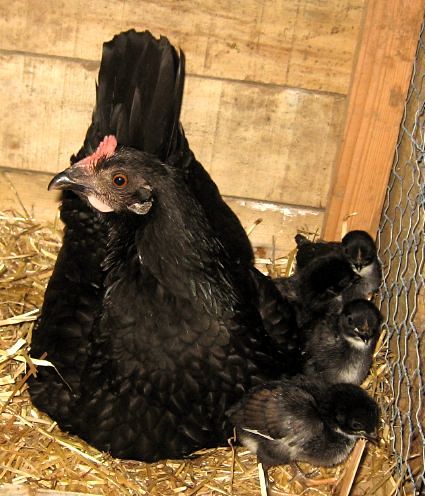

Notice anything about these photos? Yep, there’s only four babies. I didn’t notice it then – because the babies were constantly running around and under mom – but the next morning when they were all gathered around the feed dish, my heart sank to my stomach as I realized one was no longer there. We’d been having problems with rats hanging around the coop, and I’d read that rats would eat a baby chick if they could get one. I’d also read that mama hen would lay down her own life to protect her babies, but in our case, in trying to protect the babies from the other hens for a few days, we’d made it impossible for Shygirl to protect this one from a rat. My guess is that the baby managed to slip through the chicken wire into the main part of the coop – and away from mama’s protection.
So, the entire broody box – mama and the remaining four babies – was moved into our bathroom for the weekend (the only room with a door to keep out the ever-curious dog and ever-hungry cat), while we constructed an as-rat-proof-as-we-could-make-it addition to the coop. (Unfortunately, I didn’t think to take photos of that. Too bad – chickens in our bathtub would’ve made an amusing addition to the blog.)
But I do have some construction photos (and yes, I contributed more than just picture-taking to the building process):


Here’s Shygirl and babies waiting for construction to be complete, so they can take up residence in their posh new abode:

And here’s Shygirl and babies in their newly partitioned-off section of the coop (notice that we used hardware cloth instead of chicken wire – no holes large enough for a rat to get through):

The ramp and chicken-sized doorway leads to their own private “courtyard” (see how there’s solid wood and/or hardware cloth for the bottom 12 inches all the way ’round? That’s to keep out rats. We also dug out the dirt floor, put hardware cloth down, and then shoveled all that dirt back in again – keeps ’em from tunneling in from underneath. We now have a safe space for future broods, as well.):

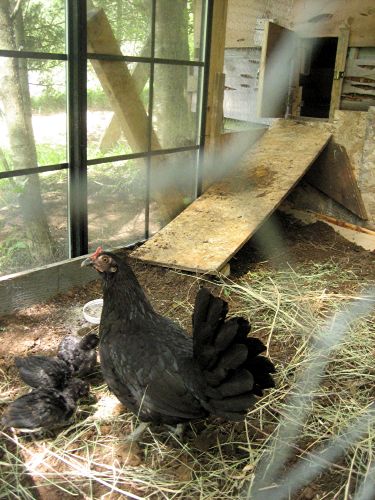

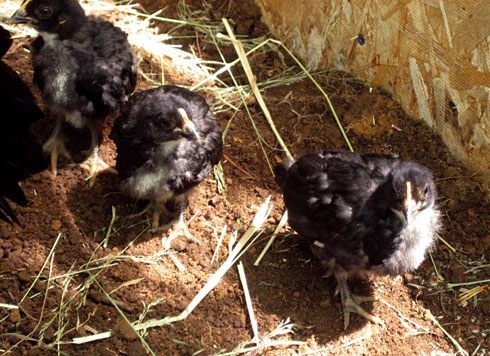
The chicks are about three weeks old in those photos, which were taken about three weeks ago. Now, at six weeks of age, they are almost as big as their (younger) in-house sibling. They are also on their own. Mama Shygirl started laying eggs again last week, which signaled the end of her mothering days. I had been letting mama and babies free range with the other chickens for a couple of weeks, slowly building up the amount of time they were outside. Now, Shygirl is back in the main part of the coop with other adults. The babies are still in their private section of the coop, though during the week they free range like the others – but on their own, as the grown-ups (including mama) don’t seem to want them around. Fortunately, they are smart enough to stick close to the coop (and safety), until they’re a little larger.
Our next project is to slowly start introducing our house Cheepler to the outside chicks, so that hopefully soon he can move out to live with them. Eventually, we’ll stop separating the two flocks, merging them into one. There will be some fighting at that point, as the males and females both sort out pecking orders. It’ll be much easier on the Cheepler if he goes in as part of a group of new young ‘uns, rather than as one lone chicken destined to be singled out by both outside groups.
Update: Wondering what happened to the rat that ate the baby? I’ve seen it frequently – it’s gotten very bold – sauntering in broad daylight into the part of the coop that isn’t totally rat proof, and eating up the chickens’ food. We’d put out traps (at night only – don’t want the chickens or the dog getting caught by mistake), and always the food would disappear without the trap being sprung.
Yesterday (after I had written half of this post and put the rest aside to finish later), while in the chicken coop checking on food and water, I started hearing these gnawing and scratching sounds. I thought “That damn rat is trying to chew its way in here while I’m right here – the nerve!” and went on about my business.
As it continued, I moved toward where the sound was coming from, and heard a shriek. The rat was inside, and it was trapped between some boards in the corner!
I sent Peter (who fortunately happened to be right outside) for a flashlight, and sure enough there it was. The nearest weapon to hand was a sharp pointy stick, which Peter used to dispatch it before digging it out from between the boards. (Turns out it had gotten caught on the point of a screw sticking out from one of the boards, which is why it was unable to free itself.)
Though I felt bad that we had to kill her (yes, she was a she, and very pretty too), I also found it somewhat fitting that we finally caught the creature that ate one of our treasured chicklets on the same day that I was writing about it.
Puts the finishing touches on this (very long) story, in a way…
P.S. Apologies for the not-so-great photos of the indoor Cheepler – some of them were taken through glass, and all of them were taken with heat lamps (either a regular light bulb or a red heat lamp bulb) on.



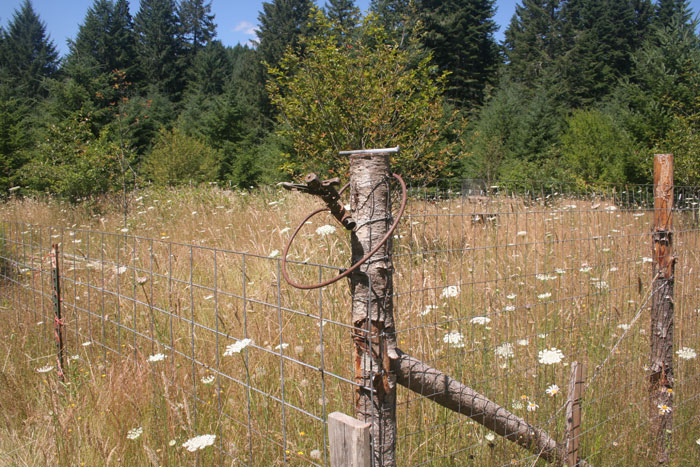

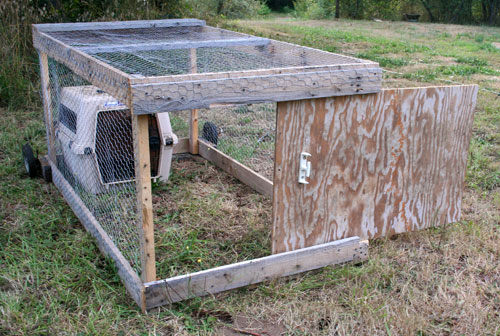
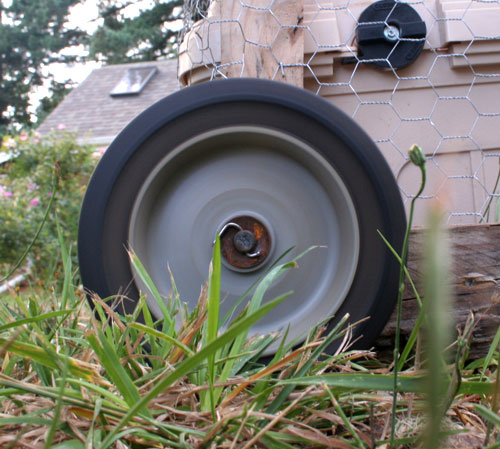

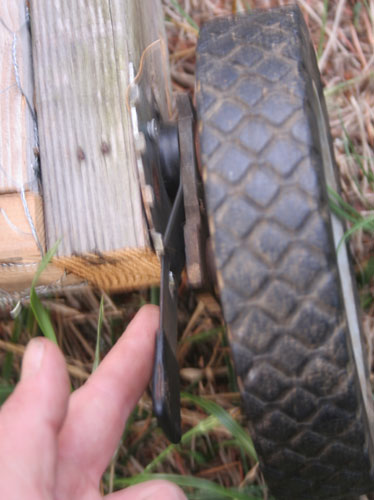

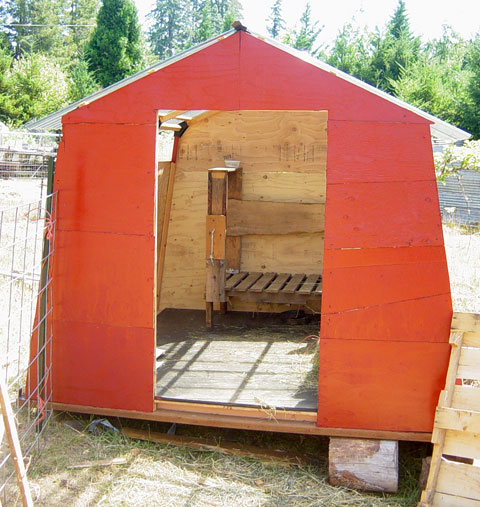
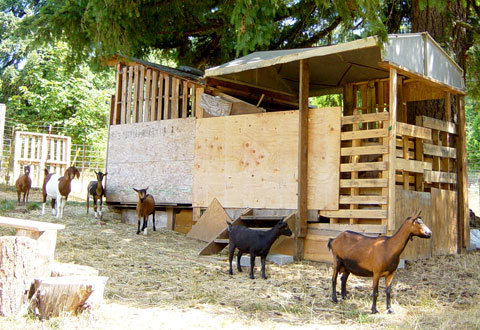


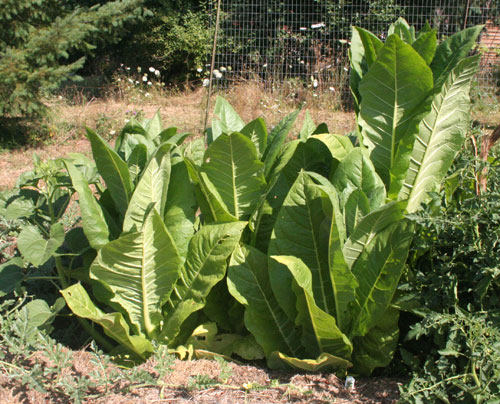
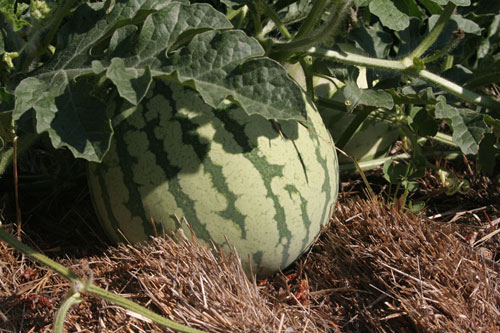


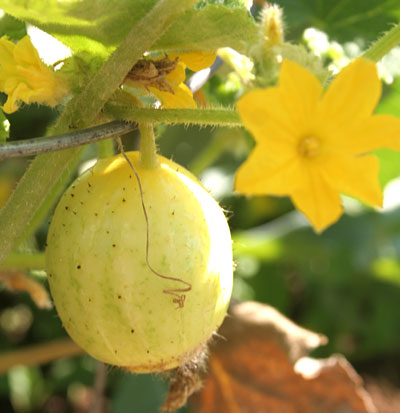

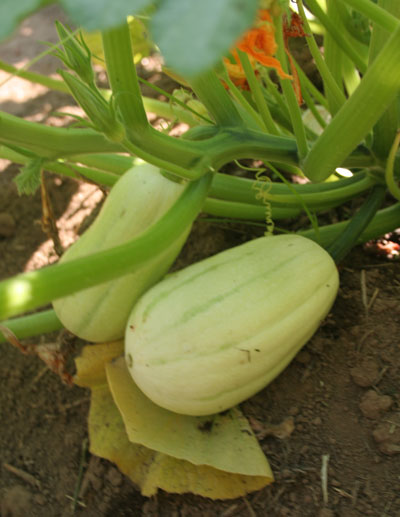
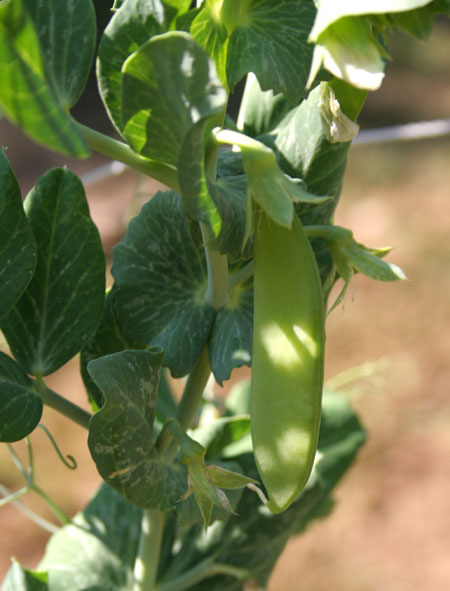

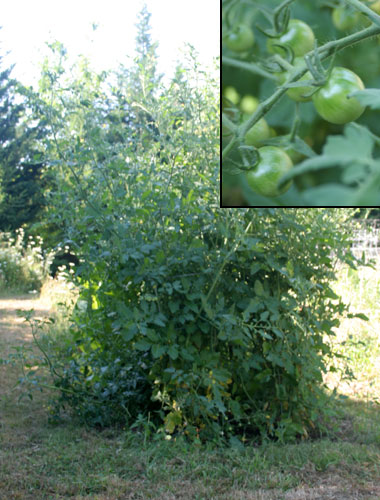
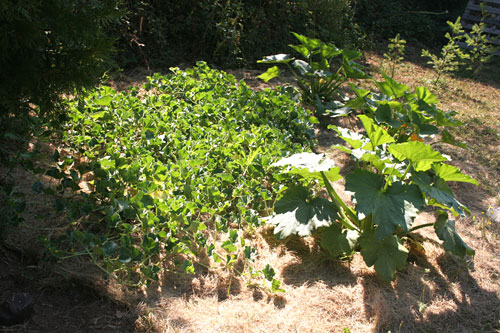



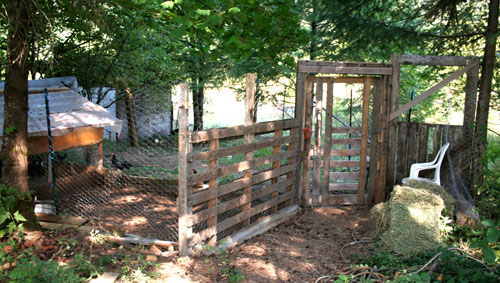
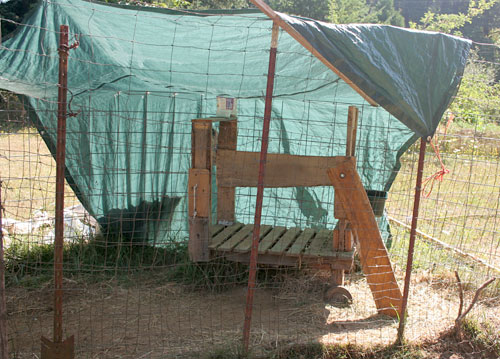

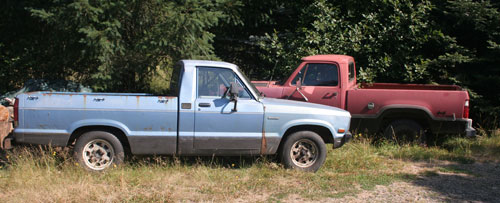
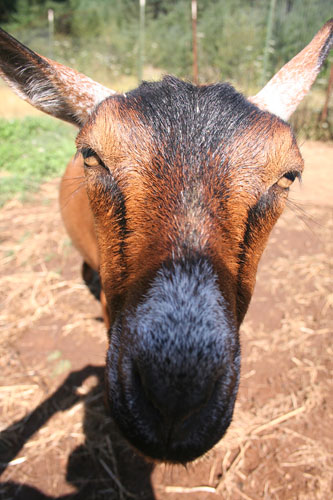




















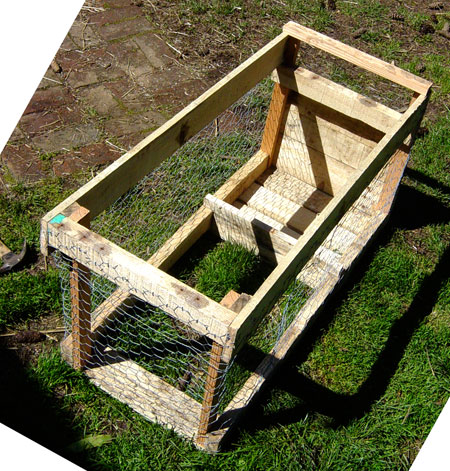
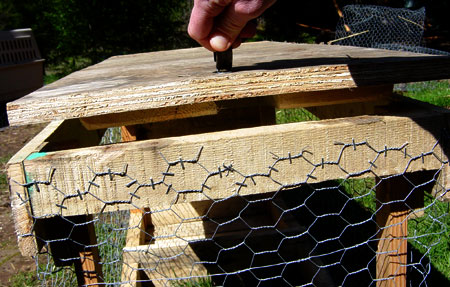
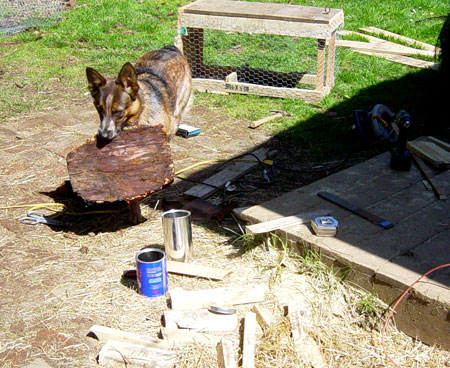
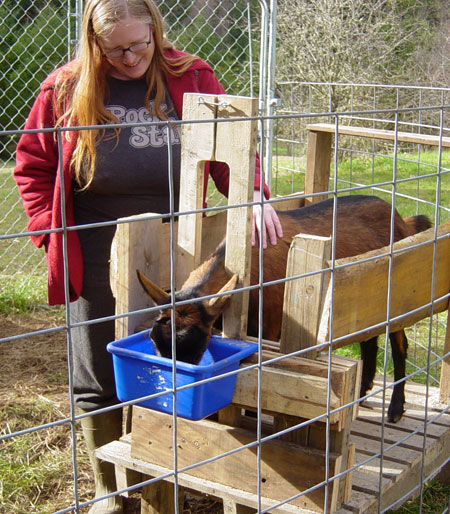
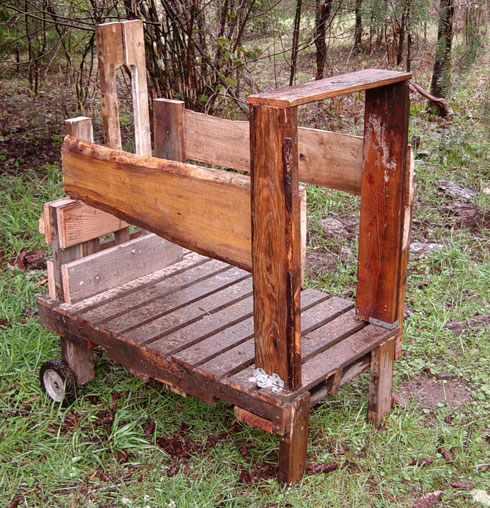
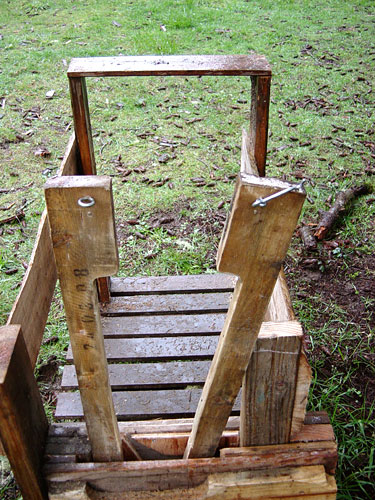


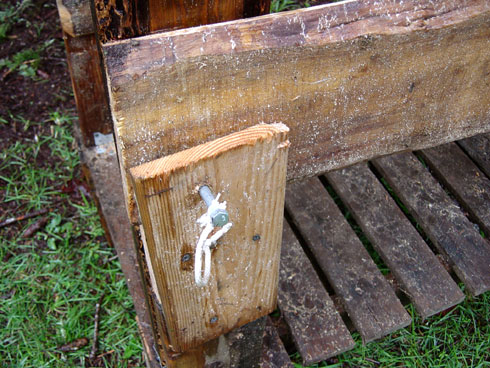
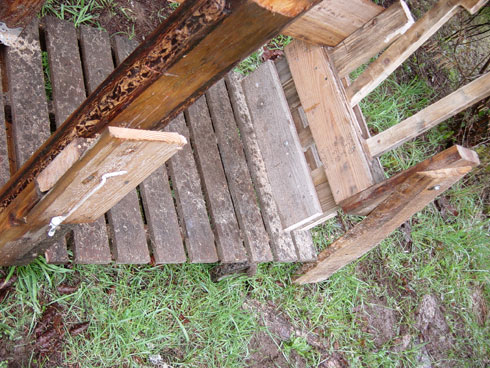
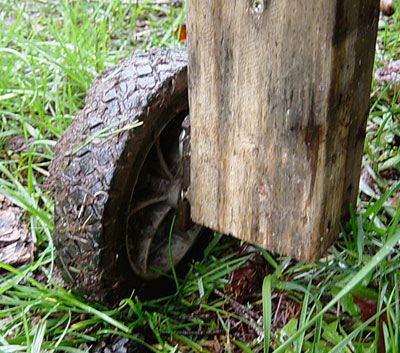
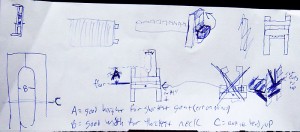

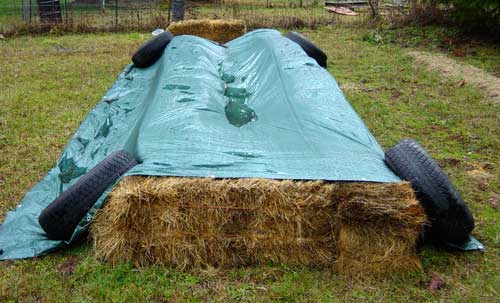

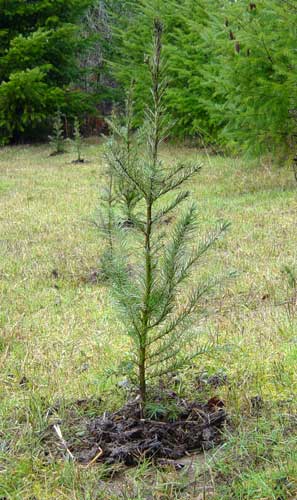 I expected the trees in there to be tiny, but they were mostly about two feet long, and very healthy looking.
I expected the trees in there to be tiny, but they were mostly about two feet long, and very healthy looking.


